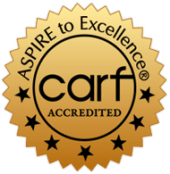
Impulse Control
The Twelve Steps: A Pathway to Sobriety
Alcoholics Anonymous is a well-known institution that pioneered the famous 12-step model of recovery, which is now used globally. AA groups and other 12-step fellowships can be found in virtually every part of the United States and in many countries. In many top-tier addiction treatment programs, participating in AA is an important part of recovery.
The Twelve Steps offer spiritual principles as a practical guide for a life free of addiction. Working through the steps brings about lasting sobriety, a stronger sense of purpose in life, spiritual fulfilment, and overall contentment.
Alcoholics Anonymous developed and outlined the 12-step approach and is the most renowned 12-step program. However, the 12 steps can be applied to a wide range of addictions, compulsive behaviors, and mental health issues. As a result, 94 official fellowships have been set up to address various problems, including Narcotics Anonymous, Cocaine Anonymous, Gamblers Anonymous, Overeaters Anonymous and Sex Addicts Anonymous.
Brief History of Alcoholics Anonymous and the 12-Step Model
The National Prohibition Act was implemented in 1920, prohibiting the manufacture, sale, and consumption of alcohol. During its 13-year duration, drinking patterns were reduced, causing most of the country’s asylums to close down and sell off their properties.
non-alcoholic fellowship
In 1935, Bill W. of New York City and Dr. Bob S. of Akron, Ohio, met through their involvement with the Oxford Group, a non-alcoholic fellowship which emphasized spirituality in everyday life. Through his involvement with the group, Bill W. recognized a need to focus specifically on helping alcoholics to recover from addiction, and in June 1935 he and Dr. Bob S. established Alcoholics Anonymous. Later that same year, the two men wrote the 12 steps to provide AA members with a roadmap towards sobriety. Over time, the 12 steps have been adapted to help individuals with various addictions and compulsive behaviors, and other fellowships have been created following the same 12-step model.
partnership
This partnership was instrumental in furthering the spread of AA as Bill and Dr. Bob went to work helping alcoholics at City Hospital in Akron. After one patient quickly attained sobriety, the three men met frequently to support one another, which strengthened their relationships and allowed them to pass on the message of hope to more people. This inspired other alcoholics to attend meetings and actively participate in the 12 steps. In 1939, Bill wrote the book Alcoholics Anonymous, which included a detailed explanation of the 12-step model and became the foundation for AA’s recovery program.
Alcoholics Anonymous
Alcoholics Anonymous, informally known as the “Big Book,” was written in 1939 by Bill W. and has since been used for more than 80 years to help countless individuals recover from alcohol addiction. The text, which outlines the 12-step approach, has become the basis of subsequent 12-step fellowships dedicated to addressing a variety of addictions, compulsive behaviors, and mental health issues. As a result, the 12-step model is now recognized as one of the most popular and successful rehab approaches in the world. AA groups and other 12-step fellowships are located in virtually every part of the United States and in many countries around the globe.
12-step model
Following the positive press from the Cleveland Plain Dealer in 1939, Alcoholics Anonymous became increasingly popular. Membership in Cleveland’s AA fellowship skyrocketed from 20 to 500 in a matter of months as more people learned about and embraced AA’s philosophy and methods, with the core principles being their Twelve Steps of recovery. This was evidence of the efficacy of the 12-step model and sparked a wave of interest in AA. Since then, the 12-step model has been used by many other organizations and has spread to nearly every corner of the world.
aa in 1939
Bill and Dr. Bob quickly realized the potential of Alcoholics Anonymous and worked to spread the message of hope and recovery to more people. After the Cleveland Plain Dealer published a series of positive stories about AA in 1939, membership in Cleveland’s AA fellowship shot up from 20 to 500 in a matter of months. This marked a turning point for the organization, as AA’s success rate became more widely known. As a result, more and more alcoholics were inspired by the 12-step method, and the organization continued to grow.

6000 members
Bill W. and Dr. Bob knew that the success of AA depended on a strong foundation and structure. As a result, they established a trusteeship organization with friends of John D. Rockefeller, Jr. serving as members of the board, which was known as The Alcoholic Foundation. An office was opened in New York City to field inquiries, distribute “The Big Book,” and provide additional support. By 1941, AA had 6,000 members spread across the United States and had become the premier 12-step program in the country.
spiritual framework
Today, it is estimated that there are over two million members of Alcoholics Anonymous worldwide, with over 117,000 groups in countries across the globe. The Big Book has been translated into 28 languages, and its success rate has earned it significant recognition. The National Institute on Drug Abuse defines addiction as an inability to stop using a substance despite adverse consequences, and the 12-step model of Alcoholics Anonymous is now seen as one of the most successful rehab approaches available. By providing individuals with a spiritual framework for living and a sense of hope for recovery, the 12-steps enable people to reclaim control of their lives and build a meaningful foundation for sobriety.
addiction
Addiction is often regarded as an incurable disease that progresses over time if left untreated, characterized by frequent relapses after periods of abstinence. It is important to note that addiction is not a moral failing or sign of weakness, but rather a serious medical condition that requires treatment. Without help, addiction almost always gets worse, which is why many individuals have found recovery through the 12-step model which emphasizes abstinence and personal accountability. By providing a spiritual framework for living and a sense of hope for recovery, the 12 steps have enabled countless people to take back control of their lives and build a meaningful foundation for sobriety.
recovery program
While complete abstinence is essential to achieving lasting sobriety, many individuals struggle to maintain this lifestyle without the help of a recovery program. Withdrawal symptoms and cravings can be overwhelming, and the challenges of living life without drugs or alcohol can be daunting. Without support, it is easy to slip back into old patterns of behavior, leading quickly to relapse and an even more difficult path back to recovery. Through the 12-steps, individuals can seek the guidance and support necessary to overcome their addictions, providing a foundation for sobriety that will last a lifetime.

Getting help with addiction or alcoholism is no easy task. However, there is a solution. Alcoholics Anonymous has been changing lives all over the world, saving countless lives from the grip of alcohol and addiction, putting families back together, and giving people a new lease on life. For more information on how you can benefit from this program call us today.
Diamond recovery center
The 12 Steps of Alcoholics Anonymous:
1. We admitted we were powerless over alcohol — that our lives had become unmanageable.
2. Came to believe that a Power greater than ourselves could restore us to sanity.
3. Made a decision to turn our will and our lives over to the care of God as we understood Him.
4. Made a searching and fearless moral inventory of ourselves.
5. Admitted to God, to ourselves, and to another human being the exact nature of our wrongs.
6. Were entirely ready to have God remove all these defects of character.
7. Humbly asked Him to remove our shortcomings.
8. Made a list of all persons we had harmed, and became willing to make amends to them all.
9. Made direct amends to such people wherever possible, except when to do so would injure them or others.
10. Continued to take personal inventory and when we were wrong promptly admitted it.
11. Sought through prayer and meditation to improve our conscious contact with God as we understood Him, praying only for knowledge of His will for us and the power to carry that out.
12. Having had a spiritual awakening as the result of these Steps, we tried to carry this message to alcoholics and to practice these principles in all our affairs.

















